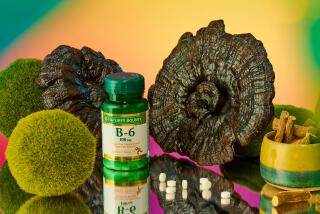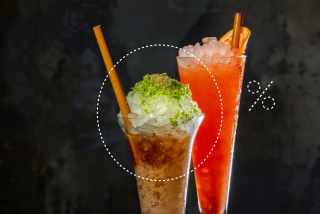Brewers, Distillers Seek to Sweeten Spirit Sales With Malt Beverages
- Share via
Brewing king Anheuser-Busch Cos. and rum importer Bacardi U.S.A. on Tuesday jumped into the fast-growing market for “malternative” beverages, a small but fast-moving category that promises to put the fizz back into relatively flat beer sales.
The new Bacardi Silver brand will compete against segment leader Smirnoff Ice, Mike’s Hard Lemonade and other malt-alternative beverages pushing for space in bars and restaurants and on retailers’ shelves.
Malt-based alternatives--industry insiders call them malternatives--have about the same alcohol content as a bottle of beer. These drinks aren’t your father’s brew or cocktail. Anheuser-Busch describes Bacardi Silver as “very light, refreshing, crisp and clean.” The Smirnoff Ice drink is a clear liquid with a sweet flavor and a slight touch of citrus.
The segment clearly is heating up; Miller Brewing Co. and Britain’s Allied Dome last month announced plans to market malt-based beverages carrying offshoots of the Stolichnaya vodka and Sauza tequila brands.
The category, which didn’t even exist two years ago, accounted for 2% of the 202 million barrels that U.S. brewers shipped in 2001. That might not sound like much, but last year’s shipments translated into 69 million cases, or 1.6 billion bottles, according to Beverage Marketing Corp. By contrast, wine coolers took years to reach a peak of between 60 million to 70 million cases in the late-1980s, the New York-based market research firm noted.
Anheuser-Busch, Miller and other beverage companies clearly are scrambling to connect with the taste buds of consumers in their 20s who grew up sipping fruit-flavored drinks, carbonated beverages and energy concoctions.
“The big guys are coming at the category because it’s proven, it’s not just a fad,” said Santa Barbara-based beverage industry consultant Tom Pirko. “Now they’re going to fight it out.”
Why are brewers leading the charge? Despite the “lemonade,” “Smirnoff” or “Bacardi” on the label, the malternatives generally get their alcoholic kick from a malt-based brewing process.
The formula now calls for a popular spirits brand to hook up with a brewer. Smirnoff Ice, for example, is owned by Diageo, which also owns the Guinness brand.
Anheuser-Busch is licensing Bacardi’s familiar name and “bat wing” logo for the new Bacardi Silver beverage. In addition to Sauza and Stolichnaya, Miller also has struck a deal with Skyy vodka to market a Skyy Blue malt-alternative.
Beverage industry observers admit that the blending of brewing and distilling can be confusing.
“I don’t think most people have a clue about what they’re drinking,” said Don Brown, a vice president at the Concord, Calif.-based Beverages & More Inc. retail chain, which reports strong demand for the new beverages. “But I guess it doesn’t matter because they seem to taste good.”
Brewers clearly have self-interest at heart.
“Beer sales haven’t been doing as well as most people were expecting, so the possibility that the younger consumer is in fact looking for some sort of [malt-based] alternative is causing quite a bit of excitement,” said Eric Shephard, executive editor of Beer Marketer’s Insights, a Nanuet, N.Y.-based newsletter.
Logistics and tax codes also enter the marketing equation. Brewers have the distribution systems needed to get the new products into bar and restaurants and grocery stores.
Distillers also are subject to higher taxes, which makes it difficult to bring product to market at affordable price points.
The growing category is sparking an advertising war. Anheuser-Busch is earmarking $60 million to market Bacardi Silver. Miller will spend $50 million to develop and market its beverages, and Diageo reportedly spent $50 million in 2001 to market Smirnoff Ice.
More to Read
Eat your way across L.A.
Get our weekly Tasting Notes newsletter for reviews, news and more.
You may occasionally receive promotional content from the Los Angeles Times.










